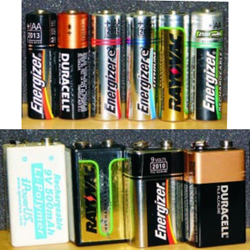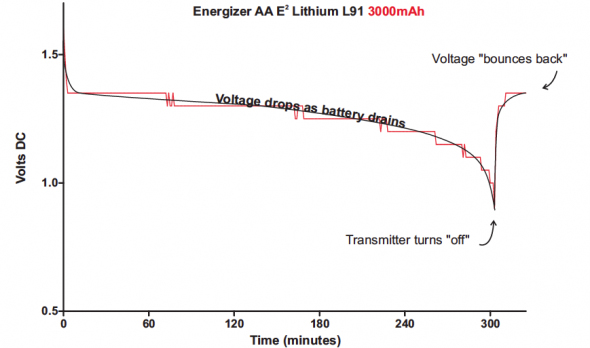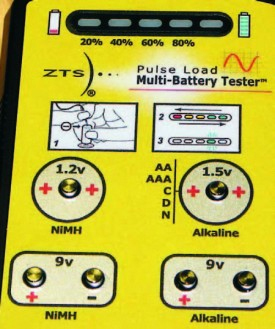
If a battery can provide one ampere (1 A) of current (flow) for one hour, it has a capacity of 1 A&h. If it can provide 1 A for 100 hours, its capacity is 100 A&h. Most small batteries are rated in mAh.
As with audio gear, “one number” specs can be deceiving.
For example, the NiMH 9V had the highest voltage when fully charged (about 9.5VDC). Yet, it had the shortest life. The Li-Polymer 9V had the lowest full-charge voltage (about 8.2VDC) but lasted the longest.
So, higher voltage is not necessarily better.
The mAh rating of a battery should only be used as a rough estimate of its suitability for an application. For example, the Li-Polymer 9V has a mAh rating that is about three times the NiMH 9V, yet it lasted about six times longer in the endurance test.
Also the disposable AA batteries have higher mAh ratings than the rechargeables, but did not last nearly as long.
Test 123DC
So what can you do with a box of exhausted batteries?
You can test the battery tester! In the run down tests I often let the test rig run overnight to exhaust the battery-under-test. The data downloaded from the data logger showed what the voltage did as a function of time. Most batteries returned to near their full charge voltage once the transmitter shut off. Figure 3 shows the time record for one of the batteries.

If the exhausted battery were tested with a simple DC voltmeter, one could conclude that it was fresh. This is because a voltmeter has an extremely high input impedance to minimize loading on the circuit being tested. A good battery tester will load the battery prior to reading the voltage.
Larry Pajakowski turned the SynAudCon listserv on to an excellent battery tester, the ZTS Pulse Load battery tester (www.ztsinc.com, shown in Figure 4).

After a fully automatic test cycle, percentage of remaining battery capacity is indicated on the LED bar display.
There are several models available and all are relatively low cost (less than $50 USD). Unlike my DC voltmeter, the ZTS correctly indicated the depleted state of each battery after the run down test.
